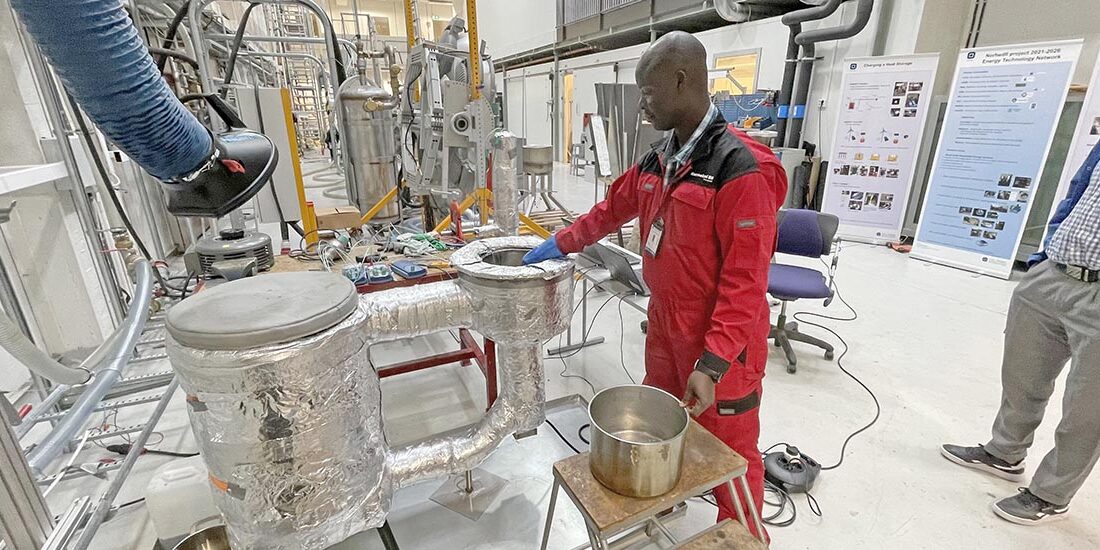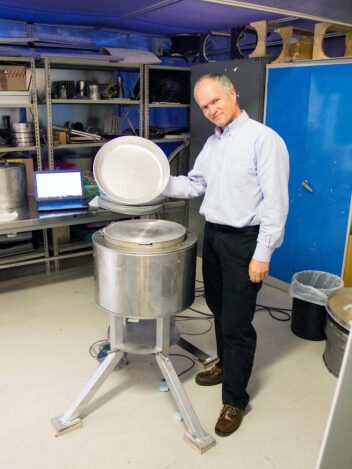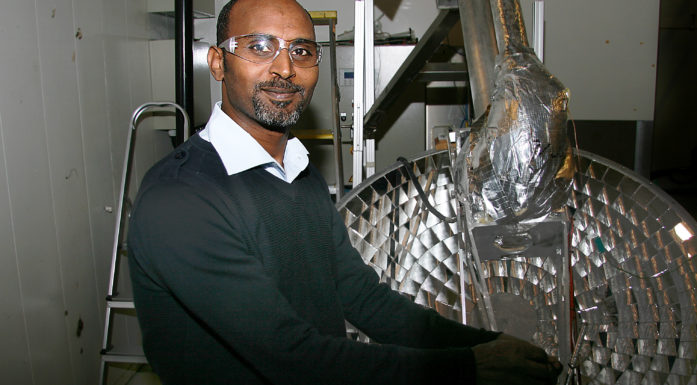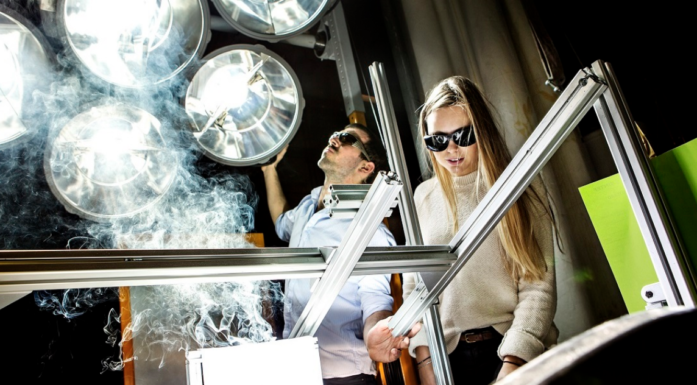Cooking with solar ovens in sub-Saharan Africa
A lot of research has been done to try to come up with ways of cooking food using solar energy, but what works best in practice in sub-Saharan Africa?
Although sub-Saharan areas may seem perfect for solar ovens, many people use wood or coal as the main source of energy for cooking, especially in areas that are not connected to the power grid.
This can cause health challenges related to smoke and soot from indoor cooking. A new study conducted at KTH Royal Institute of Technology in Stockholm shows that as many as half a million lives could be saved each year by replacing wood and coal for cooking.
As part of a series of Norad programmes, NTNU professor Ole Jørgen Nydal has been working on developing various technological solutions to the problem with a group of African universities.
“If you walk around the streets in Uganda, for example, and ask why there are no small solar panels installed on the surrounding houses, they say it is because the batteries stop working after a few years, and that they are expensive. Without storage solutions, creating solar and wind energy for cooking is very difficult,” says Nydal, who works at the Department of Energy and Process Engineering.
Nydal has been at the forefront of a long-standing NTNU collaboration with universities in Uganda and Tanzania on developing the use of solar energy for cooking.
In addition to the health benefits of these alternatives, many African countries want to replace fossil fuels with renewable sources of energy.
Solar cookers have not taken off
Recently, Nydal has written a summary and assessment of the various concepts that have been tried in an article published in the Energies journal. He points out that cooking with solar energy has a long history and involves many solutions – from can cookers to solar concentrators.
However, these solutions have never really taken off. The reasons behind this are many, but one major challenge is that some solutions require access to solar energy exactly when you need it.
“One solution to address that problem is to use a form of heat storage, a heat battery, which you charge up with solar energy during the day and cook with in the evening,” Nydal said. He specifically highlights heat storage in combination with solar panels.
Solar panels + heat storage = good solution?
Nydal and his project partners have tested a variety of heat storage concepts. The requirements for all are that they must be able to provide heat of up to approximately 220 degrees Celsius, be well insulated so that they avoid heat loss, and must be able to emit heat when the sun isn’t shining.
The researchers have looked at systems in which the heat-retaining material is either vegetable oil, rock beds, or solar salt.
A distinction is drawn between systems where the sun is used directly for heating and indirectly via solar panels.
“The conclusion from our experience is that although the energy efficiency of direct systems may be better than solar panel systems, solar panel systems have the advantage of being simple, robust and can also harvest energy from diffuse sunlight,” says Nydal.
Many factors have been assessed. For example, are the systems clean and harmless to operate inside people’s homes? Can they be produced and maintained locally? Are they robust or do they have many moving parts that can break? Is the heat transferred to the food quickly enough? In his article, Nydal writes that some systems prove to be best suited for frying food, while others are better suited for oven baking.
Testing in Uganda
Nydal says that there is also a lot of activity among the African partners in Ethiopia, Tanzania, Uganda, Mozambique and most recently Malawi and South Sudan. Universities in South Africa and Namibia are also showing a lot of interest.
Jimmy Chaciga is a PhD student at Makerere University in Uganda and recently published an article on solar cookers. Chaciga studied a concept in a laboratory at NTNU and then went to Makerere to build it. It is a small-scale solar cooker with a tank holding 18 litres of sunflower oil combined with a heating element and three solar panels. Its energy efficiency was very promising.
“We have been testing many possible concepts for a long time now, but the biggest challenge in the future is implementation. Experience tells us that it is not that easy to do from universities. You have to leave the university setting and engage with others who can produce, test and follow up the systems,” says Nydal.
This has not stopped researchers and students from testing new concepts such as converting wind energy directly into heat storage.
“Sun and wind conditions change all the time, so a combination of both wind and solar energy is a good idea,” says Nydal. There is a clear need for new energy solutions for cooking, and our goal has been for the universities in the partner countries to take an active role in this development.
Solar ovens spark interest
The solar oven research at NTNU has engaged and fascinated many people for a long time.
When the different concepts have been tested in the weak Trondheim sun at NTNU, many people have stopped to take pictures.

Scholarship holder Casiana Blasius Lwiwa outdoors at NTNU. She says that the heat storage in the middle has measured 173 degrees C at most. Photo: Maren Agdestein/NTNU
Students have travelled to Tanzania, for example, in collaboration with Engineers Without Borders as part of their master’s project. In addition, a group of entrepreneurial students have created a solar grill to test a similar solution in a European setting.
And some of Nydal’s solar oven research has ended up at the Norwegian Museum of Science and Technology in Oslo.
Exhibited at the Norwegian Museum of Science and Technology
“It is a bit strange having something exhibited at a museum before it has even been put into use,” says Professor Ole Jørgen Nydal.
The permanent energy exhibition at the Norwegian Museum of Science and Technology in Oslo showcases the history of Norwegian energy. The exhibition provides an overview of Norwegian energy that starts with steam power and hydropower, and leads to current energy sources such as solar and hydrogen power.
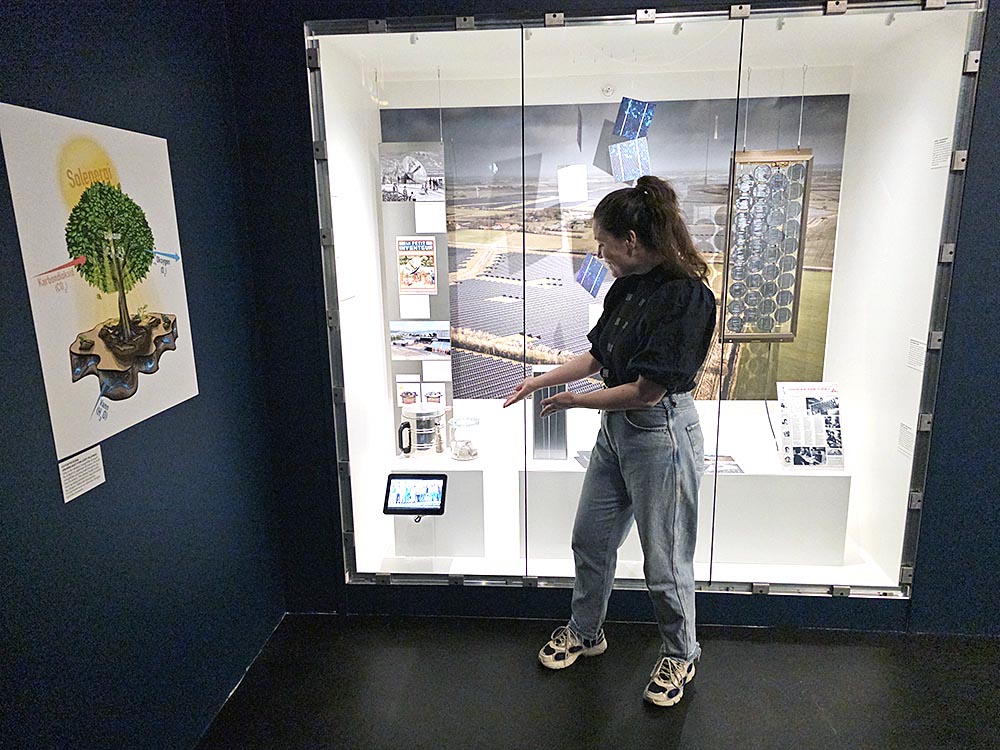
An employee at the Norwegian Museum of Science and Technology shows off the solar mount where the bucket for Nydal is on display, in the new permanent energy exhibition at the Technical Museum.
And in a display case dedicated to solar energy, placed next to early examples of Norwegian solar panels and more modern solar technology, there is a prototype from NTNU in Trondheim that was developed in Nydal’s solar oven project.
“It is great that heat batteries are being displayed in a place where energy problems and renewable energy are showcased. The challenge now is to make the heat storage technology work for frying, boiling and baking,” says Nydal.
Support for solar oven research
Much of the solar oven research discussed in this article is supported by NORAD via the NORHED II project Energy Technology Network (EnergyNET). Support also comes from the Research Council of Norway and the EU program Erasmus+. EnergyNET is a research collaboration between NTNU, Makerere University and seven other universities in East and South Africa.
More about solar oven research:
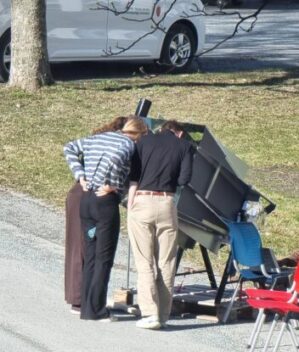
Heat must be collected from the sun, but it becomes difficult when NTNU’s students are so curious that the project is put in the shade :) Photo: Lars Konrad Sørensen/NTNU
- Heat Storage for Cooking: A Discussion on Requirements and Concepts, Ole Jørgen Nydal, Energies, 2023, 16 (18) https://ntnuopen.ntnu.no/ntnu-xmlui/handle/11250/3113626
- Design and experimental analysis on a single tank energy storage system integrated with a cooking unit using funnel system.Jimmy Chaciga, Makerere University, Karidewa Nyeinga, Makerere University, Denis Okello, Makerere University and Ole Jørgen Nydal, Norwegian University of Science and Technology, in Journal of Energy Storage. Volume 79, 15 February 2024
